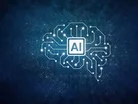McKinsey: artificial intelligence in heavy asset production

Dating back to the mid-1950s, the concept of artificial intelligence (AI) was ahead of its time for many years, being shelved as an ‘interesting idea’.
Today, the concept of AI has become commonplace in the business world, even manufacturers with heavy assets are launching projects to determine if and how AI can benefit their operations.
However, McKinsey highlights that “while AI technologies have made tangible improvements to supply chains and administrative functions, they have so far had scant presence in production—which is interesting, given that cement plants were early adopters of automation and control systems and have used digitized sensors and signals for decades.”
The benefits of AI for heavy asset production
For many years, companies have been ‘digitalising’ their systems to improve visualisation for operators, however most with heavy assets “have not kept up with the latest advances in analytics and in decision-support solutions that apply AI,” says McKinsey, with operators still relying on their experience, intuition, and judgment. “As a result, many operators take shortcuts and prioritise urgent activities that don’t necessarily add value.”
Benefits of AI include:
-
The ability to preserve, improve, and standardise knowledge
-
The ability to make complex operational set-point decisions on its own
-
Deliver predictable and consistent output
-
The ability to cost-effectively create and maintain algorithms and intellectual property in-house which is cheaper, versatile and adaptive
-
The ability to fully automate complex tasks and provide consistent and precise optimum set points
“With respect to operational improvement and dynamic adaptability, artificial intelligence can outperform conventional decision-support technologies.”
What heavy asset manufacturers need to adopt AI
“It’s important to realise that, for all their embedded artificial intelligence and machine learning algorithms, the success or failure of real-time asset optimisers springs from the people who create, use, and maintain them. A people-oriented, holistic, forward-looking approach can unleash tremendous power when individuals, digital technologies, and advanced analytics work together,” comments Mckinsey.
In order to successfully create and maintain AI organisations need to assemble the right people. “Designing, building, connecting, improving, and maintaining an AI solution requires people with solid skills and experience, a big-picture perspective, and the interpersonal skills to work collaboratively toward a common goal.” However due to this kind of talent being in high demand and limited, companies need to consider upskilling current employees, such as data-savvy engineers, or hiring experts from outside.
To read more about AI in heavy asset production, click here!
SEE ALSO:
- C3.ai: delivering leading enterprise AI software
- C3.ai: optimising inventory levels
- 3M: Driving business value with C3.ai’s innovative tech
- Read the latest issue of Manufacturing Global here
For more information on manufacturing topics - please take a look at the latest edition of Manufacturing Global.

